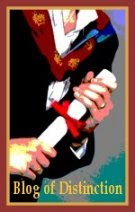
Just shy of six months old, the pup is on the cusp of sexual maturity. Although her bones will not fully fuse for another year, Ari is nearly full-grown at 40 pounds. This is half the size we had imagined she would be, and she still doesn’t even get close to filling out her extra-large bed and house. Still, her growing willfulness and desire to distance herself from us outside is a sign that she might be approaching her first estrus cycle. Time to act. The idea of her in a torrid love affair is not at all appealing, nor is the fact that dogs who go through a reproductive cycle are more likely to contract mammarian cancer. I contact the vet’s office yet again, this time to set up an appointment for Ari’s hysterectomy.
When I call, I expect them to schedule the appointment a few weeks away—long enough for us to get comfortable with the idea. But Laurie tells me they have an opening two days later and urges me to take it. I reluctantly agree and am given a list of instructions for the next 48 hours: light meals beginning today, no food the day before, no water beginning at midnight. Any disregard for these rules, Laurie warns, may result in complications during the surgery.
She runs down a list of precautionary questions.
“Is Ari allergic to anesthesia? Does she have any ill effects with it?”
I tell her I have no idea—Ari’s just a healthy kid; we’ve had no cause to sedate her.
“You understand that there are serious risks involved whenever an animal is anesthetized,” she warns. “Some never wake up.”
This is not what I want to hear. We have no choice but to spay Ari. We can only hope that she will be fine.
The night before her surgery, the three of us go for a late walk. For once, I feel no sense of urgency or lingering responsibilities back home. This will be our last caninaturalist outing for a while, and I want it to last as long as possible. I’m more worried about the pup than I let on. I want to do something momentous—just in case.
Electronic pulsing from across our pine grove advertises it’s just the place for such an excursion. The spring peepers (Pseudacris crucifer) got off to a late start in May, so they’re just now winding down with their nocturnal orgies. We walk to the neighborhood fire pond in search of these boisterous frogs. Even in this, the decline of their mating season, the sound is deafening—a single, piercing pitch just out of range of even a coloratura soprano. The din has a throb to it—one that reverberates in my inner ear, sending static all the way down my spine. How must it sound to this wolf-eared dog, already more attuned to volume and pitch? Greg and I take one another’s hand. We have entered an alien landscape and need reminders of that which is familiar.
Donning headlamps, the two humans crouch at the edge of the pond, looking for amorous amphibians. We spy a crayfish and a single, skimming frog. Both glide just above the pond floor, making feathery kicks with each stroke. Ari wades in up to her elbows and stares intently into the water. What’s in there? None of us is sure. The water seems oily in its blackness, reflecting our light and shrouding the pond goings-on in secrecy. Meanwhile, the din of the frogs continues. It is more than deafening. Ari retreats from the water and hangs tight, leaning her shoulder against my leg.
“How many?” Greg asks. His voice is high and forced, capitulating over the peeping. Still, it’s hard to hear.
“What’s that?”
“How many? The frogs. How many of them do you think there are?”
I look up, casting my headlamp into the trees, as if this narrow beam of light might reveal the masses. It doesn’t.
“I don’t know,” I say. “A hundred? Or maybe just a few dozen really loud frogs singing in symphony?”
Try as we might, the three of us can not find more than that one peeper. We duck and weave our way through the brush, peering into cat tails and stands of trees. I am aware that this behavior is highly peculiar—and very much unlike me. It feels exhilarating, though, and I’m proud of us for making the trip if for no other reason than because it is an utterly uncharacteristic thing for me to do. Ari, on the other hand, remains alert and guarded—uncertain why we’re out at night and what is causing this amazing din. She continues to stick close by, venturing only a few steps into the pool before once again attaching herself to my side. If this was to be a celebratory walk in her honor, I’m pretty certain it’s not having the intended effect. She seems relieved when we circle back to the dirt road.
On our way back home, Greg and I crouch beside a much smaller, truly vernal pool—nothing more than a residual puddle, really. There, illuminated by our two headlamp beams, rest hundreds of little gelatinous orbs. Roughly the size of a small marble, they are nearly transparent, save a telltale black dot in the middle of each. Many rest singularly, although we also find much larger, brain-like masses of egg clusters. These are salamander and tree frog eggs, laid to incubate in this joint nursery while their parents return to upland woods and await their delivery.
The three of us return to our own woodland house. Once inside, Ari stands impatiently while I remove her leash, then she trots to the kitchen, awaiting her evening biscuit. We’re too close to her surgery time for a snack, so I shake my head no. She looks confused. When the biscuit tin remains closed, she cycles through the tricks she has learned at school: sit, shake, lie down, bow. Still nothing. She sighs—either frustrated with me or wondering why she is being punished—and makes her way slowly upstairs to bed. A few minutes later, her guilty owner settles in as well.
That night I have strange dreams about plaited bodies and oozing piles of egg sacks overflowing ponds and pools. The next morning, we all arise out of sorts. Ari is hungry and anxious; I am overwhelmed by amphibian reproduction; Greg claims he was repeatedly awakened by a wife executing frog kicks in her sleep; Cam does her usual glowering between pulling tufts of hair. We make a miserable household and try our best to stay out of one another’s way. Ari and I need to be at the vet’s office by 8:00 for her check-in, so we have little time for anything other than a quick walk. Once back inside, she hovers by the spot where her food and water dishes are usually located, still wondering what has prompted this continued ban on food. I give her my best look of empathy and a few long strokes down her back.
At the vet’s office, they’ve seen too many tearful, overwrought goodbyes to allow for much ceremony. Instead, the vet tech takes Ari’s leash from me and ushers her back into the hidden part of the clinic. I ask nervously about her schedule.
“We’re doing three or four today,” Laurie says. “I think Ari’s in the middle. She should be awake by 3:00. You’re welcome to call.”
That morning, I nod my head thoughtfully as students share their perspectives on Robert Frost. I do not hear a single word they say. Instead, I am trying to imagine Ari’s surgery preparation and hoping she is not terrified. After my last class, I race home, forgetting that there is no need for a bathroom break in the yard. Instead, I sit on the kitchen table, staring alternately between the nearby phone and my watch. 2:38. 2:45. 2:49. Time has never moved so slowly.
At 2:52, I phone the vet.
“I’m calling about Ari,” I say as soon as Laurie answers. “How is she?”
“She’s fine. No trouble at all. Just a little groggy.”
“Really?” I want more reassurance.
“Of course. And she’s a doll. She was wagging her tail before she was even fully out of the anesthesia. Everyone thinks she’s a real sweetheart.”
Laurie explains what I have already committed to memory: they will keep her overnight to confirm that there are no ill effects from the medication or the surgery itself. They also need to make sure she does not pull at her stitches, which could ultimately cause her to bleed to death. And, of course, she needs to rest—she is going to be very sore.
Driving over the next day, I become impatient at red lights and drivers observing speed limits. Once at the office, I take my place in the small line of people there to collect their recovering pets. When it’s my turn, the vet tech grins.
“Ari?”
I nod.
“She’s a little ornery sometimes, isn’t she?”
I nod even more enthusiastically. “Why?”
“She’s been trying all day to remove her stitches. We had to put on a restraining device. Don’t worry—she’ll just have to wear it for a day or two. And we added some surgical glue, too. That should make it harder for her to yank them out.”
I nod.
“She’s a little ornery sometimes, isn’t she?”
I nod even more enthusiastically. “Why?”
“She’s been trying all day to remove her stitches. We had to put on a restraining device. Don’t worry—she’ll just have to wear it for a day or two. And we added some surgical glue, too. That should make it harder for her to yank them out.”
She goes back to retrieve my dog. When they emerge, Ari seems miserable—a space-aged cone has been tied around her neck with an Ace Bandage. She looks like Astro Jetson. Even worse, she’s lost all sense of physical perspective and promptly bangs the cone into the door jam. This causes her to stop in her tracks and sigh dramatically, lowering her head until the cone thuds against the linoleum. I get the sense this has happened repeatedly on the short walk from the kennels to the reception area. Her technician politely pretends not to notice the tragicomedy of the scene.
As for me, I can only offer my own sigh. “Oh, pup,” I say. “You poor thing.”
Before she can be released, I receive our post-op instructions. We are told to limit her activity and keep her incision clean for a week. I raise my eyebrows at the improbability of either. Are they serious?
“I know,” Laurie says. “It’s going to be hard with this one. Just do your best.”
We struggle our way out the office door and meet our first real challenge at my tiny hatch-back car. When Ari tries to step in, she catches the bottom of the cone on the driver’s seat. When I try to lift her up, we bang it against the roof. A few more tries are equally unsuccessful. Eventually, by cradling her in my arms, I am able to load her like a missile into a payload. We begin our drive home. At each stoplight, people in adjacent cars point and chuckle at my space-age dog. For once, she does not enjoy the attention.
Back home, I call Greg to inform him about the extra-terrestrial presence in our house.
“Oh no,” he laughs. “Poor puppy. Is she embarrassed?”
“Wouldn’t you be?”
By the time he returns two hours later, Ari has not only removed the cone, but hidden it as well. Greg finds me on my hands and knees, trying to fish it out from behind the couch. A groggy but nonetheless triumphant dog looks on from across the room. Using a broomstick, I am eventually able to slide the cone and bandage back out from the couch. Greg tries to reattach it, but the pup scampers away. We are faced with a choice: incite vigorous activity, or take a chance that she can’t bite through the surgical glue. We opt for the latter, though we make a point of checking on her every hour that night. It’s painful to look at her shaved belly.
The incision is bright pink—an angry worm running down her abdomen. She has also been tattooed—a circle and descending cross, the international symbol for woman. Through the circle is a thick X. Semiotic translation? Once a female, but no more. I begin theorizing about gender definitions in contemporary culture. Greg rolls his eyes and, instead, makes jokes about the thick ink, calling Ari a biker chick.


















0 comments:
Post a Comment